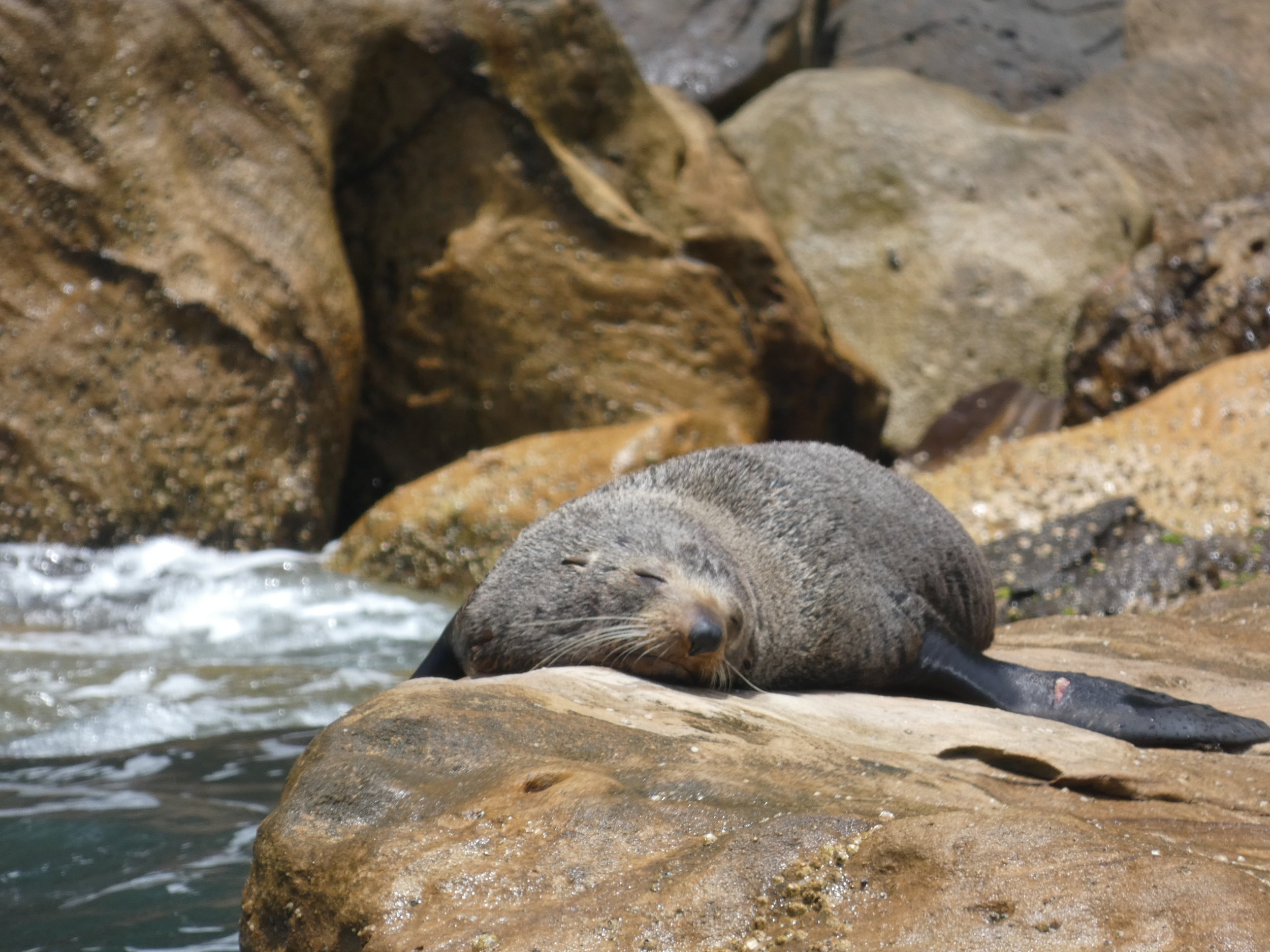
Seals on the Central Coast: Curious Visitors from the Sea
Most people don’t think of seals when they picture the Central Coast, but quite often these playful, whiskered creatures pop up along our shoreline. Whether they’re hauling out to rest on a rock or cruising around a fishing spot, seals are common and exciting visitors – and create a lot of interest when they appear.
What kind of seals visit us?
The most common seal seen on the Central Coast is the Long-nosed Fur Seal - They used to be called New Zealand Fur Seals.
They’ve got:
A thick coat of dark fur
Dark, round eyes and long whiskers
External ears, which make them different from true seals
Strong flippers, which they use to “walk” on land
Sometimes, if you are lucky, you might also spot an Australian Fur Seal, or very rarely, Sub-antarctic Fur Seal or Leopard Seal, which are usually found further south.
These seals are locals. 200 years ago there were seals all up and down the NSW coastline. They were decimated by Sealers in the early 1800’s, and are taking a long time to return to their previous areas.
Where can you see them?
Seal sightings on the Central Coast are very common, as we have a seal bachelor colony just across Broken Bay at Barenjoey Head.
Terrigal Haven – often just lazing in the water near the rocks
Norah Head – seals are sometimes near the rocks on the lower shelf
Bateau Bay and Avoca Beach – rocky ledges and platforms are often local hangouts for seals
The Entrance and Tuggerah Lakes – particularly when fish are running
Brisbane Water - There are also 1 or 2 seals swimming and fishing in the area
Seals come ashore to rest, recuperate from injuries, sunbake, or escape rough seas.
They might stay for a few hours or even a couple of days before heading back out to sea.
What do seals eat?
Seals are carnivores and love a seafood feast! Their diet includes:
Fish
Squid
Octopus
Crustaceans
They’re excellent hunters and can dive deep to chase down their meals.
Around the Central Coast, they like to hang around where fish are plentiful and seas are reasonably calm.
Are seals dangerous?
YES!
Seals look cute (and they are!), but they’re still wild animals, and very unpredictable. If you spot one:
Keep your distance – at least 40 metres
Never try to feed or touch them
Keep dogs away – even the friendliest dog can frighten or be bitten by a seal
If a seal feels threatened, it can bite or charge, and their bite can cause nasty infections.
What to do if you see a seal
If you see a seal resting on the beach or rocks:
Stay back and admire it from afar
Keep pets and kids away
If it looks injured or tangled, call your local rescue group,
Marine Wildlife Rescue Central Coast
Most seals are just resting and don’t need help – but if in doubt, it’s always best to get advice from wildlife experts.
How can we help seals?
Don’t leave fishing lines or rubbish – they can get tangled
Give them space to rest – they need energy to survive
Keep beaches clean – a healthy coast supports all marine life
Support Marine Wildlife Resuce Central Coast
Seeing a seal on the Central Coast is a special moment. So if you’re lucky enough to spot one, enjoy it quietly and remember – you’re sharing the beach with a visitor from the deep blue sea.
